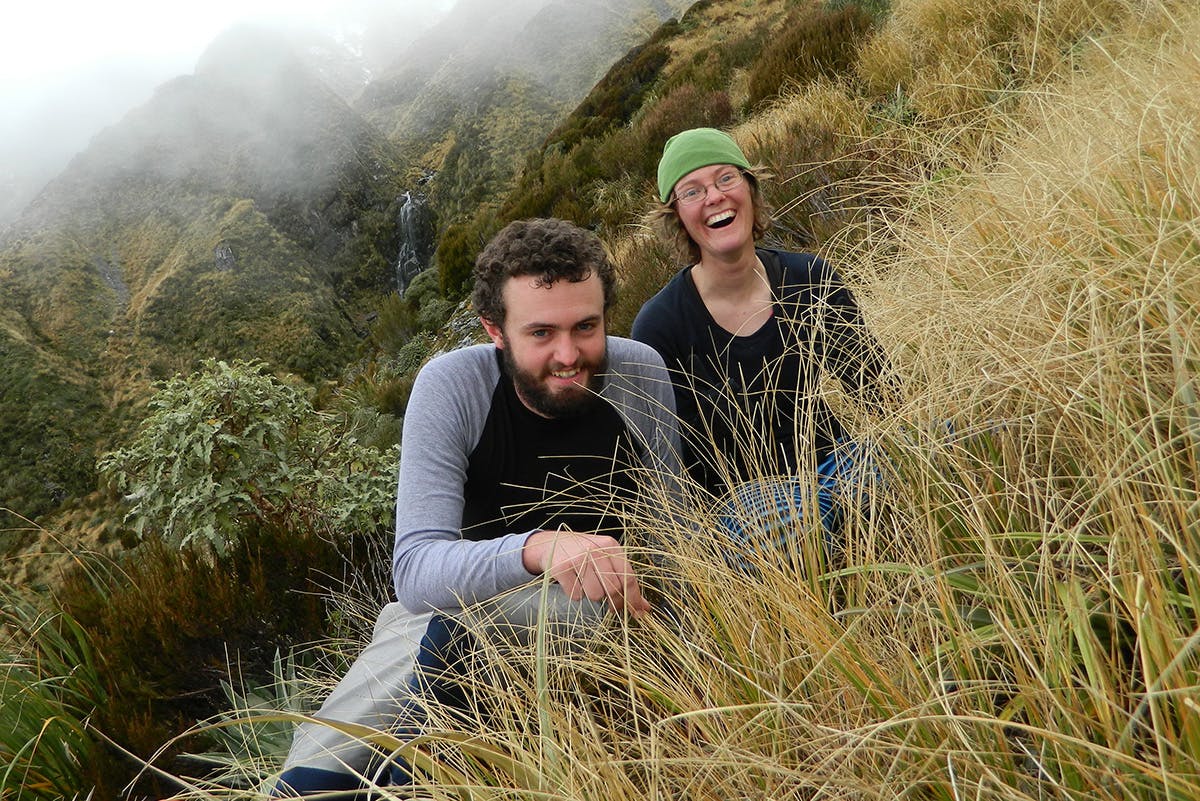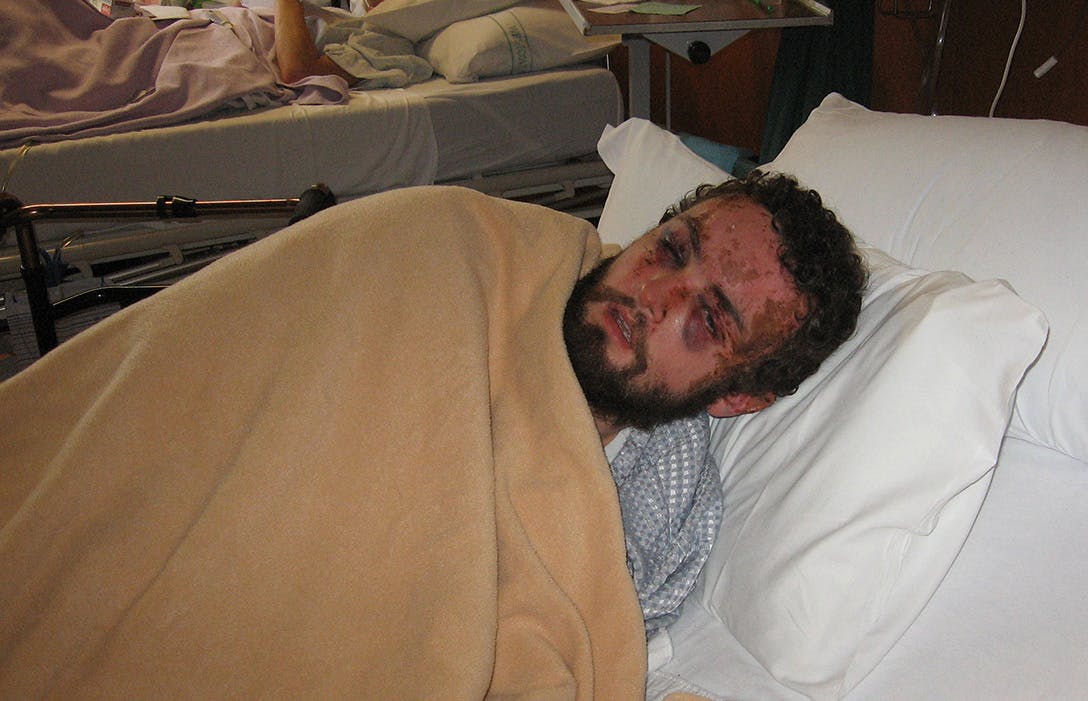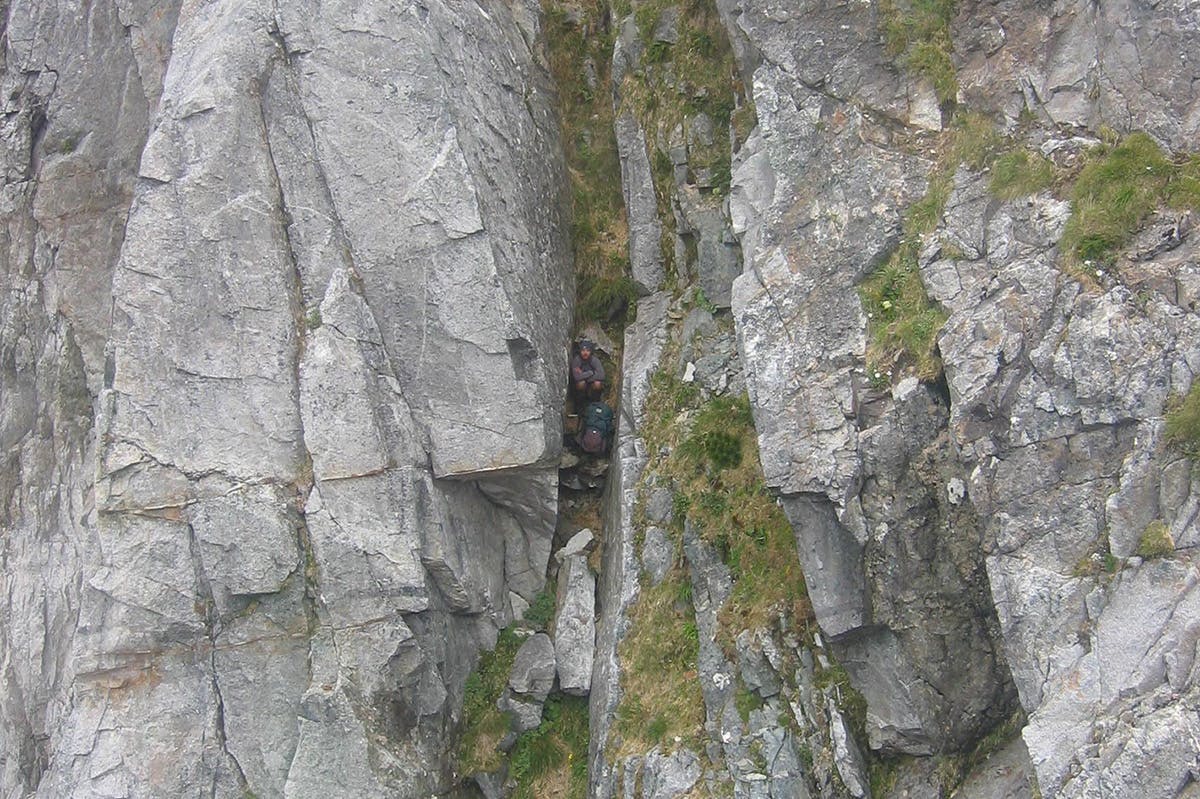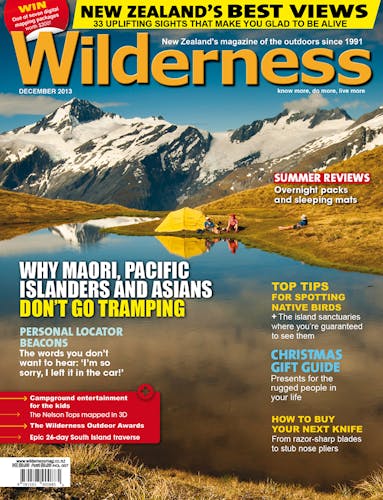Lost or injured in the backcountry? You may think it could never happen to you, but then that sounds like famous last words. With mobile phone-sized personal locator beacons becoming more common, why tempt fate when the press of a button can have you whisked from the hills within hours after disaster strikes
Rose Pearson is not quite one of those people who thought it would never happen to her.
Her preparations for tramps and mountaineering trips include $700 spent on a personal locator beacon.
She considers herself experienced in the outdoors. She is young and fit, and that, perhaps, was her undoing.
On a 10-day tramp through the Garden of Eden, or to climb Mt Aspiring, a PLB should be considered an essential piece of equipment. But when she set off on a simple, four-day hike with her brother, she calculated no real risks in the way of avalanches, rock falls or river crossings.
Besides, she reckoned she could easily get out from any point of their planned route in a day to call for help if the unlikely happened.
The problem was the unlikely didn’t include the possibility they could both be seriously injured and left unable to walk.
In the end all it took was an unexpected patch of snow, a mere kilometre from the hut at the end of their second day. As they ventured across, it turned icy and without crampons, or even ice axes, they soon realised they were in trouble. But now going back or forwards was difficult.
In some ways it was a text book accident.
Dusk was looming. They were rushing. Suddenly Pearson found herself tumbling down the slope.
As she gathered speed she bounced off rocks and over humps. Her shoes were ripped from her feet as she desperately tried to stop herself.
Eventually she slid to a stop, her barely conscious brother slumped like a rag doll beside her.
Sprawled across her pack, her pelvis was moving in ways it never had before, grating and crunching at numerous severe breaks.
As the pair huddled together through the night on a ledge barely wide enough for their bums, her brother bombarded her with the same questions over and over again. What happened? Where were they? Did they have a PLB?
“That last one cut me to my core with guilt and regret,” says Pearson. “I could only answer ‘no Nelson, it’s in the car. I’m sorry’.”
Pearson had five long days and cold nights, during which her brother developed frostbite in his feet, to think about that decision before they were finally rescued and flown to hospital.
LandSAR chief executive Harry Maher sums it up succinctly: “People with PLBs simply get rescued, on the spot.”

Rose Pearson and her brother Nelson on Zit Saddle, not long before their horrific accident. Photo: Supplied
In fact, when it comes to beacon rescues, LandSAR, a voluntary search and rescue organisation, is often not even involved. In many cases, an emergency beacon effectively takes the search out of search and rescue.
Satellites pick up the distress signals from the beacon and alert the Rescue Coordination Centre New Zealand. They provide a location, which if the beacon is equipped with a GPS, can be accurate to less than 100m. If the rescue is straight-forward a suitably equipped rescue helicopter with a paramedic is dispatched. No need for an extended ground search.
PLB’s save lives. That is a message the outdoor-going public is taking on board. The number of Kiwis who own a PLB has more than doubled in the past three years.
Since PLB’s first became available in the United States in 2003, they have now outstripped the number of emergency locator beacons in aircraft and boats.
Just over 20,000 PLBs are registered in New Zealand, compared to less than 9000 in 2010. Every year that number grows by thousands and to date this year, 5200 people have registered new PLBs.
More people are using them across multiple disciplines, such as the keen outdoor type who might take their PLB tramping or hunting one weekend, and then out on the boat for a fishing trip the next.
Farmers, forestry and logging workers, and even government departments conscious of the health and safety of workers out in the field, are carrying PLBs.
Everybody in the outdoors should carry a PLB says Maher, who spent 10 years working in the adventure tourism industry and held several senior positions at the Department of Conservation before heading LandSAR.
But he also warns they should not be relied on completely.
“They are not a replacement for equipment, preparation, good judgement and all those other things,” he says. “You can get into a lot of trouble and not be able to activate a beacon. They are not the be all and end all.”
Concerns have been raised that people may be more inclined to take risks because they think the beacon makes them safe.
However, Maritime New Zealand general manager safety and response services Nigel Clifford, who has overall responsibility for the rescue coordination centre, doesn’t agree. He says the evidence shows “it is not really getting worse than it has always been”. There are always going to be some people who will take more risks than others.
One noticeable statistic in the land environment, however, is that there are few accidental activations of beacons and no hoax activations.
“In the vast majority of cases people genuinely felt fearful for their lives, or got into a position that if they didn’t use their beacon they would have ended up in severe trouble,” says Clifford.
In fact, authorities are careful not to chastise or put people off using their beacons if they are in trouble. Clifford cites the story of a hunter in Fiordland who had taken a fall but was reluctant to activate his beacon.

Nelson suffered concussion, three broken wristbones and frostbite to his feet as a result of the accident. Photo: Supplied
He had bad chest pains, which were getting worse, but being the stoic type, he hunkered down. When he eventually pushed the button to call for help, rescuers discovered he had a punctured lung and was slowly bleeding to death.
“He came too bloody close to killing himself because he didn’t want to bother people,” says Clifford.
It is human nature to think accidents and bad things won’t happen to us, but Bright Ideas ELB director, Alan Bright, who imports McMurdo emergency locator beacons, sees the evidence every month that things can, and do, go wrong.
Once a beacon has been activated it needs a little refurbishment and the two or three beacons that land on his workshop bench every month all come with a story.
There was the deerstalker whose malfunctioning GPS led him into “nasty country”. He found himself bluffed, unable to climb back up and a river raging down below. Darkness was rapidly approaching and it began to snow. Feeling hypothermic, he activated his beacon. “If I hadn’t had my Fastfind PLB with me I would have been lost forever and died on the side of that hill,” he told Bright.
A white water kayaker who dislocated his shoulder and ended up on the wrong side of the river, could see his truck just around the corner, but any small movement caused excruciating pain. Any attempt to cross the deep and swift river followed by a rough drive out would have been unbearable and dangerous. “We needed a chopper, so I activated my PLB,” he said.
Then there’s the tramper who fell while crossing a stream and found herself lying in a riverbed, in the rain, unable to move.
PLBs have even saved large groups, like the school which activated a beacon hired for a school camp after they suspected a 14-year-old pupil had broken her ankle.
Statistics show the number of beacon alerts follows the same upward trend as the number of PLBs registered almost doubling from 53 in 2010 to 97 this year.
The thing is “you have got to buy it before you need it”, Bright says.
Beacons have dropped in price and generally cost anywhere from $400 to $700. Even so, people looking for cheaper deals on the internet may come unstuck, Bright warns.
Beacons sold in New Zealand have to adhere to strict standards, such as being waterproof and able to float in fresh water. They are also programmed with the New Zealand code, which is needed to register beacons. People buying beacons from Europe or the United States may find themselves paying to get their beacon re-coded.
Beacons need to be registered with the rescue coordination centre, a simple process that is free and takes a few minutes online.
Every beacon has a unique number and when they are registered information about the owner is recorded, such as telephone numbers, emergency contacts and the sort of outdoor activities that person partakes in.
Clifford estimates there could be up to 5000 beacons floating around New Zealand that have not been registered.
“Registration saves lives,” he states categorically. It also saves time and money for search and rescue organisations and is also a legal requirement.

This photo illustrates how difficult it can be to find people. Fortunately, this tramper had a PLB. Photo: Supplied
When a beacon is activated the first thing the rescue coordination centre does is ring the listed emergency numbers. “We don’t want to send a helicopter to someone washing their boat in the driveway,” says Clifford.
If the activation is genuine, there can be situations, such as if the person is in a steep valley or a cave, where an accurate position isn’t immediately available. If an emergency contact is able to tell them where the person was headed they can get a search underway immediately.
“There have been a number of rescues in the past four or five years where registration made the difference between life and death.”
Beacons also have a ‘secondary homer’. This signal cannot be picked up by satellites, but it is seen by helicopters and aeroplanes, and once they have picked it up, pilots can track that signal to the source, Clifford says.
Another area to be wary of is to make sure of buying a GPS-coded beacon. While most beacons now have GPS, Clifford says there are still a few non-GPS beacons floating around and it’s not worth scrimping $100 to buy such a model.
Distress signals from 406MZHz beacons are picked up by satellites in low Earth orbits that use the Doppler effect to calculate a close estimate of the beacon’s position. Usually at least two satellite passes are needed, which can take a number of hours to complete.
GPS locations, on the other hand, are picked up by geostationary satellites. “If a fixed satellite can see your signal it will be processed and sent back to us in less than five minutes, and in the right circumstances is accurate to less than 100m.”
However, the geostationary satellite closest to New Zealand can’t always see the signal. Russia recently launched a new satellite that will be integrated into the system, and because of its location, will improve coverage in New Zealand, Clifford says.
Stationary satellites cannot determine the position on non-GPS coded beacons.
Basically, “the beacon goes ‘help, help, help’ and the GPS goes ‘here I am’,” he explains. “It gives you the best of both worlds.”
The system PLBs operate under – known worldwide as Cospas-Sarsat – is a global non-profit system.
“The system provides alerts to all the countries of the world for free,” says Clifford. “Nobody charges anybody for putting this stuff up in space. It’s phenomenal.”
It is also an altruistic system. While 40 countries, including New Zealand, are members, beacon alerts are still picked up from countries which are not members.
If a New Zealander activates their beacon while climbing in Switzerland, alerts will be sent to both New Zealand and the Swiss. Generally Swiss authorities would have any rescue under control, but if the activation is in parts of the world where rescue services are less well organised, then RCCNZ will do what it can to help.
However, while beacons are fantastic as a last resort of communication in a life-threatening emergency, it is important to note the vast majority of land search and rescues are still coordinated by the police, rather than the rescue coordination centre. Generally RCCNZ coordinates rescues for beacon alerts, while police coordinate non-PLB search and rescues, such as missing or overdue trampers.
It’s a good idea to carry two forms of communication, such as a PLB and a mountain radio, or other satellite devices, Clifford says. And always remember one of the golden rules of the outdoor safety code – tell somebody where you are going and when you expect to be back. “Even the best prepared people can run into problems.”
Speaking to Pearson, via Skype, two months after her horrific accident with her brother, it’s obvious the memories are still fresh. As she tells her story she fights back tears, but there are also smiles.
She is now living in the United Kingdom, where she is working on her doctorate, and was back in the hills for the first time last week. She swapped her crutches for walking poles and joined a group walking in the Peak District.
“The walk was lovely . . . and yes, I did carry my PLB,” she says.








